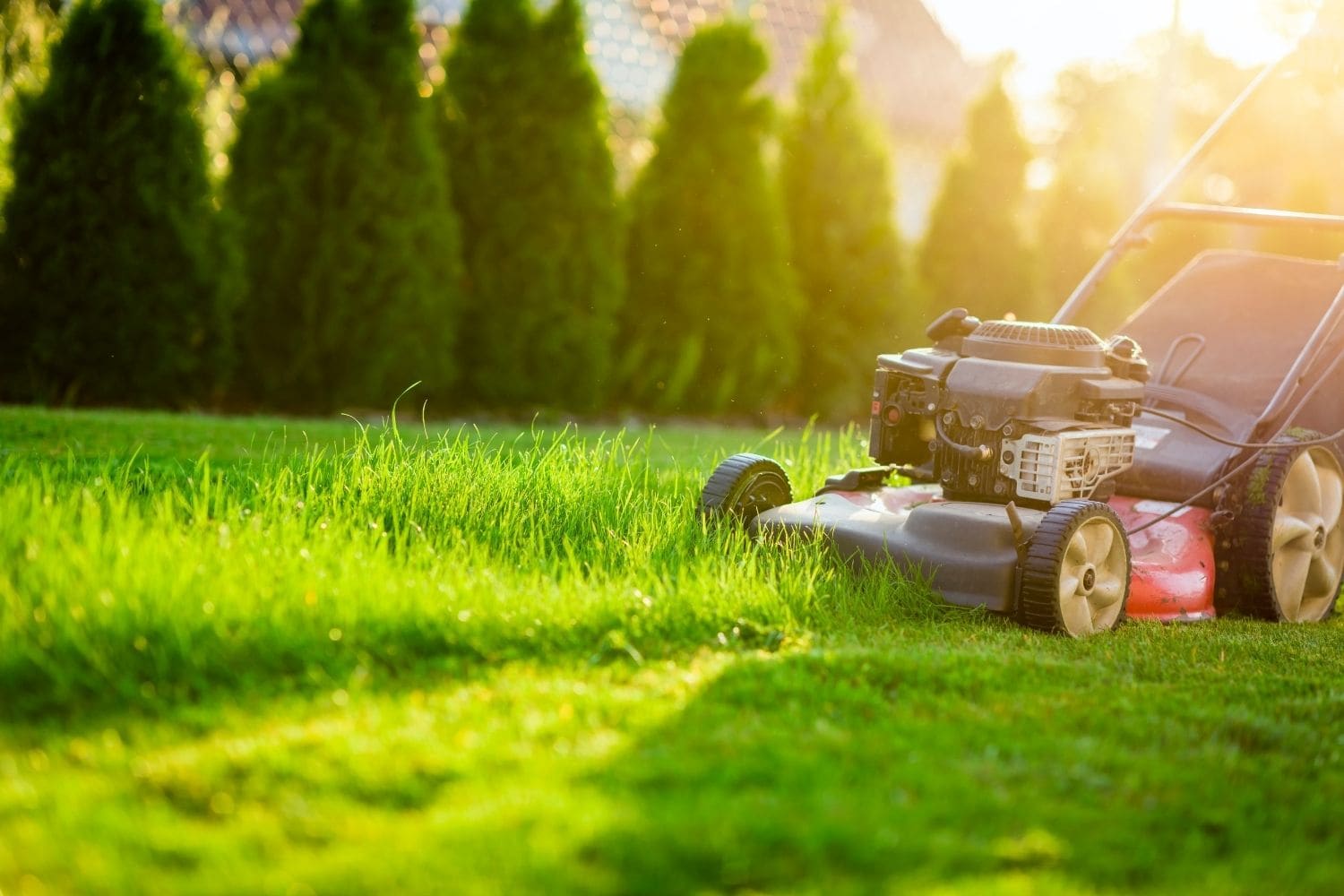AD | Collaborative post
Lawn mowers are an important lawn care tool that can quickly turn into a costly, time-consuming purchase. It is therefore crucial to do your research before committing to buy one. This guide will help you make the best decision for your lawn based on factors such as the size of the lawn, the amount of grass clippings, and whether or not you have hills in your yard.
The Different Types of Lawn Mowers
There are many different kinds of lawn mowers, and the type of lawn mower you will use depend on a few factors – a type of property, terrain, whether or not you have a slope. We list out a few of the types below:
Push – the oldest and most energy-consuming type of lawn mower, requiring the lawn cutter to push it throughout the yard. This method is used more often by smaller yards with an average of about 1/4 acre or less.
Self-propelled – a more expensive machine that moves automatically forward on its own. These are ideal for larger yards because they require very little human intervention. There are many types of self-propelled machines, some with single blades parallel to each other others with multiple blades per wheel or two sets of wheels so they can cut in both directions.
Riding Lawn Mower – are heavier machines that can be mounted by riding on them as they’re propelled forward. The operator uses their feet on the pedals to move it, as well as their hands-on levers or gears for control. These mowing machines typically have a more powerful motor and large wheels for rolling across rough terrain without throwing rocks up at you from beneath the blades of grass clippings on hills.
Tractor-pulled lawn mower – The engine and drive train are located on the frame of the tractor. That frame is usually positioned directly over/behind the rear wheels of the tractor, so it will push a lawnmower at speeds up to 15 miles per hour. This type of machine is used typically for heavy-duty work, such as chopping large tangled vines and shrubs. This is not a good choice for edging gravel paths and walkways because it can destroy these types of surfaces quickly and easily.
How to Choose the Right Type for Your Yard
Lawn mowers based on different sizes of yards
For yards exceeding 8,000 square feet, a 36-inch tractor/lawn mower would be recommended. This is for those larger type yards with more grass and lots of leaf debris which needs to be cleared.
Large residential properties under 8000 square feet may want to go with a 30″ or 32″ self-propelled lawnmower. This is what you would use on a smaller lawn that has less grass and leaves that typically don’t need much cleaning.
Lawns with properties below 4000 square feet should probably stick to hand or electric push mowers as they are more practical for such small plots
Lawn mowers based on handling grass clippings
The amount of grass clippings has a definite effect on what type of lawn mower is best suited, so when choosing it’s important to think about how much grass is cut. For example, if the mower doesn’t automatically collect clippings then you’ll need to dispose of them yourself, with either in-ground disposal or with a pushcart model that can be towed behind the mower. If no discharge capacity was mentioned or shown in specifications, don’t bury them in your garden because they will eventually decompose back into nitrogen gas and lead to an irreparable loss in soil fertility.
Lawn mowers based on the terrain, are there hills or obstacles in the yard
Hills or obstacles in your yard can alter the type of lawn mower you use. For example, a trailer-mounted mower might not be able to work efficiently on slope terrain, and a rider mower has a lot of wheels which means it will be less stable going up hill. If hills are present in your yard, you’ll want to consider purchasing a riding lawnmower because it is better equipped for variations in elevation. In contrast with powered push-style mowers, the blades on riding models never stop moving since they’re driven from below using an electric motor. A blade that’s always moving makes superior cutting decisions by constantly adapting to the environment and optimizing its performance for what’s needed at any given moment.
Tips on Using and Caring For Your New Lawn Mower
Do not run the mower when it is very hot outside, especially after 10 A.M. when engines are warmed up. Run at dawn or dusk for less sound and better performance. Never wash with detergent or soap because this can gum up your engine and reduce its life. (Salt water is suggested as a cleaner.) Wipe off excess dirt with a wet cloth before using the mower; then wipe down after use depending on whether you’re storing or using immediately again; then lightly sand any areas that start to look dry and sandpaper any metal parts to remove corrosion and powdery deposits (if you take care of your engine like this, it could last anywhere from five to twenty years).

